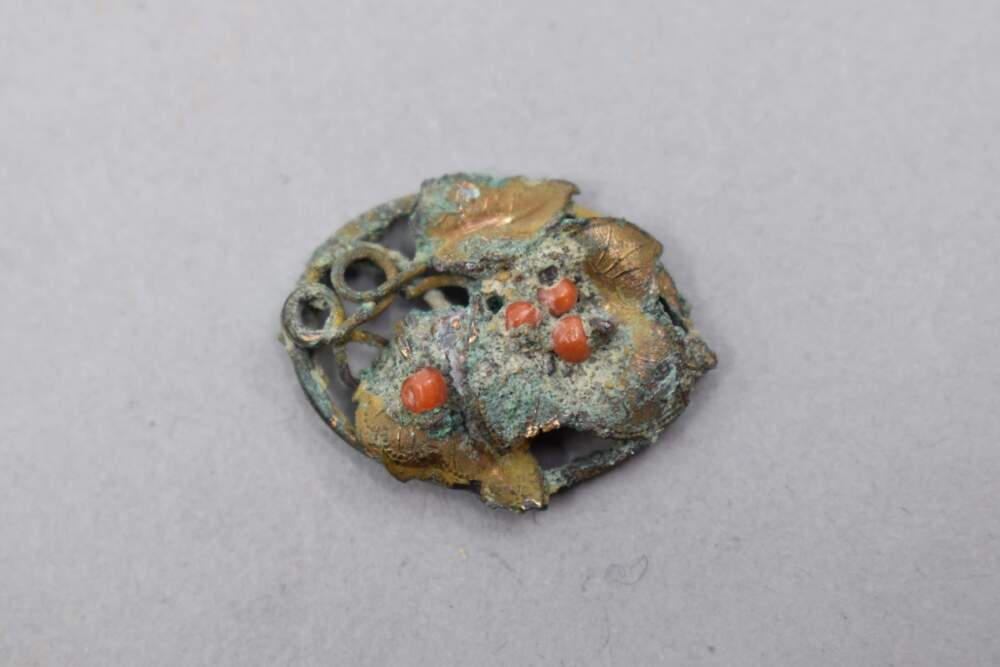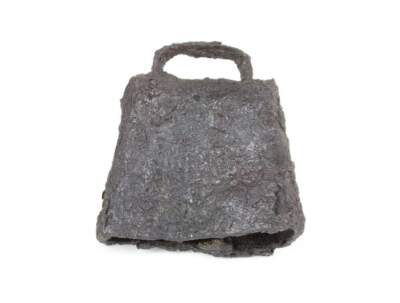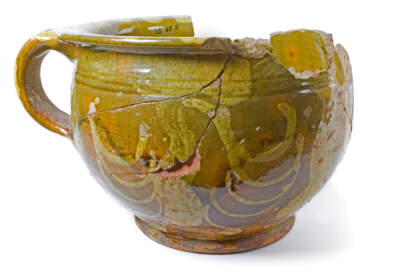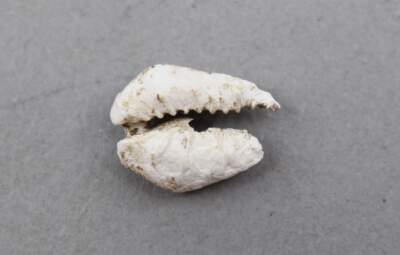Advertisement
Field Guide to Boston
Boston's newly re-opened archaeology lab connects the past with the present

The city of Boston has collected more than 1 million artifacts through its Archaeology Program over the past 40 years. Those artifacts — and the process of preserving them — is being done at Boston's newly re-opened Archaeology Lab.
Radio Boston visited the lab to see some of the collection. City archaeologist Joe Bagley and Rev. Mariama White Hammond, Boston's chief of environment, energy and open space, joined us for the conversation.
As part of the tour, Bagley and Hammond showed Radio Boston three artifacts pulled from the archives. They included a cowrie shell, a necklace, and the oldest artifact ever found to date in Boston.
This transcript has been lightly edited for clarity.
Interview Highlights
On centering people and purpose in archeology:

Joe Bagley: "We have a saying here that 'It's not about the stuff, it's about the story.' And archaeologists know a lot about what these things are and some of the story, but the story is really only completed when other people have a chance to actually look at it and interpret what we're finding. Because, to me, a ceramic shard can tell me about dates and locations of where trade was happening. But to a ceramicist, they could tell me about what kind of techniques are being used or what kind of technology went into actually firing those pot shirts.
And even today, an artist could look at those same things and then turn them into new art. And so I think that what we're trying to do here is get everything to the point where we have completed what we can say about the story and it can now go out and so more people can add to that story."
"These things come from places and the places are part of that story. It's not just a toothbrush. A toothbrush that was found at the factory where they're made has a totally different story than a toothbrush found in an outhouse at a brothel."
On reckoning with the city's past with slavery:

Rev. Mariama White Hammond: "We have an image of ourselves in Boston as abolitionists, but we have not had accurate understandings of how many enslaved people did live here and contributed to the building of this city ... The team spent lots of time ... to pull out the names of over 2,000 [enslaved residents.] Many of them who are named and some of whom are not ... I knew that there were enslaved people in the city, but I didn't know the extent of how many, nor did I really understand their contributions nor their names."
"One of the things that they discovered is that there were two enslaved potters who were contributing to ceramics in Charlestown. And the question is, 'What was their story? And where did they come from?'"
"One of the reasons we have you out here and wanted to do this is that more people need to know there is power in these artifacts. There is healing in these artifacts. There are tough conversations in these artifacts, but we need to have them. And I believe our city will be richer and better if more of us are leaning in and interacting with this material, even if sometimes it's hard."
On the oldest artifact in the city's collection:

Joe Bagley: "If you looked at Boston's history as a hundred foot long timeline, 1630 happens in the last three feet. So the vast majority of the story that we know of the place we now call Boston happened before 1630. And so one of the things that we've been really trying to make sure is talked about and heard is, is the story of the native community in Boston. In working with the community, we've been asked to use the term 'creation' instead of artifact to keep the humanity of the person that made these things in the storytelling of it."
"This is the base of a spear point or a knife of some kind. It broke probably around the time that it was made ... it became part of the ground and was found during the 1980s during a dig to build some lighting projects in the [Boston] Common ... this is between 5,500 and 7,500 years old. So that means that when this was being made, there were no pyramids in Egypt. There was no Stonehenge. But there were people in Boston living here. And on that 100-foot timeline of the human history of Boston, this is only halfway down. So we still have 5,000 years of history in Boston where we know people are here."
On working with indigenous groups and the changing role of archeology:

Joe Bagley: "Archaeology is an inherently colonial act. Archaeologists, especially back in the day, were like, 'I have every right to go wherever I want and to dig up whatever I'm interested in learning about, regardless of whether people think it should or shouldn't be dug up.' And we're really trying to go back to square one and fundamentally question archaeology: What is archaeology? What should archaeology be?
"Now we have policies where we only dig if there's something going to happen to the site [and] we're working with the tribe to come up with a plan together ... my goal is to more or less make a new archaeology that says when you're doing archaeology of Native things, Native time periods, you're doing that with the Native community. Answering their questions and doing what they ultimately want done with those things if it means putting them right back. Okay. If that means turning them over to the tribe afterwards for curation. Great. But archaeology is now needing to become more of a technical service that can answer questions that communities who's stuff we're digging up actually have, and not just, I'm digging it up because I want to know the story."
This segment aired on January 8, 2024.

